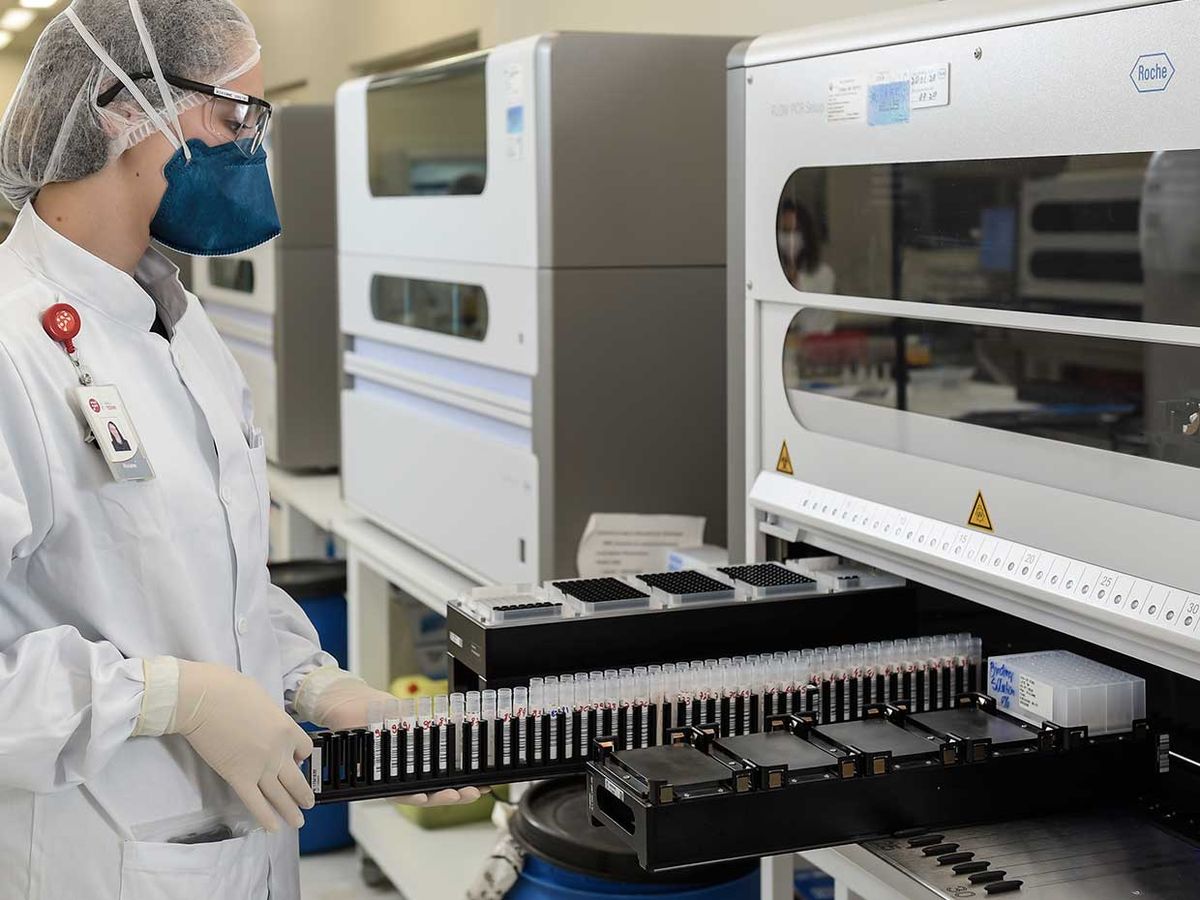
THE INSTITUTE As the number of COVID-19 cases has surged in the United States and elsewhere, laboratories have struggled to keep up with testing demands. There have been shortages of reagents needed to conduct the tests. Also, many tests—or SARS-CoV-2 assays—are difficult to perform in large numbers. Both problems can delay patients’ test results.
IEEE members Raghu Mudumbai, Xiaodong Wu, and Weiyu Xu, and Ph.D. candidate Jirong Yi, say they believe they have devised a way to accurately test more samples with fewer reagents by using compressed sensing, a signal-processing technique. Mudumbai, Wu, and Xu are professors in the University of Iowa Department of Electrical and Computer Engineering, in Iowa City. Yi is studying electrical engineering there.
Using algorithms, compressed sensing acquires and reconstructs a signal from a series of sampling measurements—which can reduce the amount of data that needs to be sampled. Pooling samples and analyzing the data using compressed sensing could make COVID-19 testing 10 times more efficient, Xu says.
HOW IT WORKS
Testing patients for the coronavirus is essential for containing its spread and conducting contact tracing, Xu says.
The COVID-19 test is done by taking a nasal swab. Each individual sample is tested using a qPCR (quantitative polymerase chain reaction) or dPCR (digital polymerase chain reaction) machine. The machines target genes specific to the virus.
It can take a qPCR or dPCR machine several hours to run an individual sample—which has contributed to the relatively low number of tests being done.
While brainstorming how to make testing more efficient, Xu and the team wondered whether it was possible to increase the number of tests processed by labs without sacrificing accuracy. One idea they came up with was to pool samples into batches that could be tested simultaneously. The researchers realized that compressed sensing could help them make the testing more efficient without modifying the qPCR or dPCR machines or existing assays.
“We noticed that the infection status signal is often sparse, meaning that only a small percentage of samples test positive,” Xu says.
Because so few tests are positive, labs could potentially pool together and test samples at the same time.
“If a lab technician has three samples that need to be tested for the coronavirus, instead of testing them individually a pool test would be conducted using compressed sensing to determine the results,” Xu says.
First, the lab technician pools the first and second samples and tests them. If the result comes back negative, she can conclude that neither patient has the virus. Next, the second and third samples are combined. Should the result come up positive, she can conclude that the third sample is positive because the first two samples tested negative.
“This [testing method] potentially enables us to test up to 32 samples simultaneously,” Xu says. “It will enable mass testing, which is deemed crucial for safely reopening social and economic activities.”
By making the number of copies of the virus in the samples the signal, the infection status of each individual could be determined with sparsity-promoting signal processing algorithms, Xu says.
Lab technicians could use the information from the earlier pooled tests to determine the positivity of samples used in future pools.
“Our compressed sensing–based approach can determine the number of copies of the virus in each individual sample, while traditional group testing only provides binary data,” Xu says. “This technology can also help to more rapidly and effectively respond to future pandemic outbreaks.”
The team, which is working with a local virology lab, aims to begin clinical validations within the next six months.
Joanna Goodrich is the associate editor of The Institute, covering the work and accomplishments of IEEE members and IEEE and technology-related events. She has a master's degree in health communications from Rutgers University, in New Brunswick, N.J.



